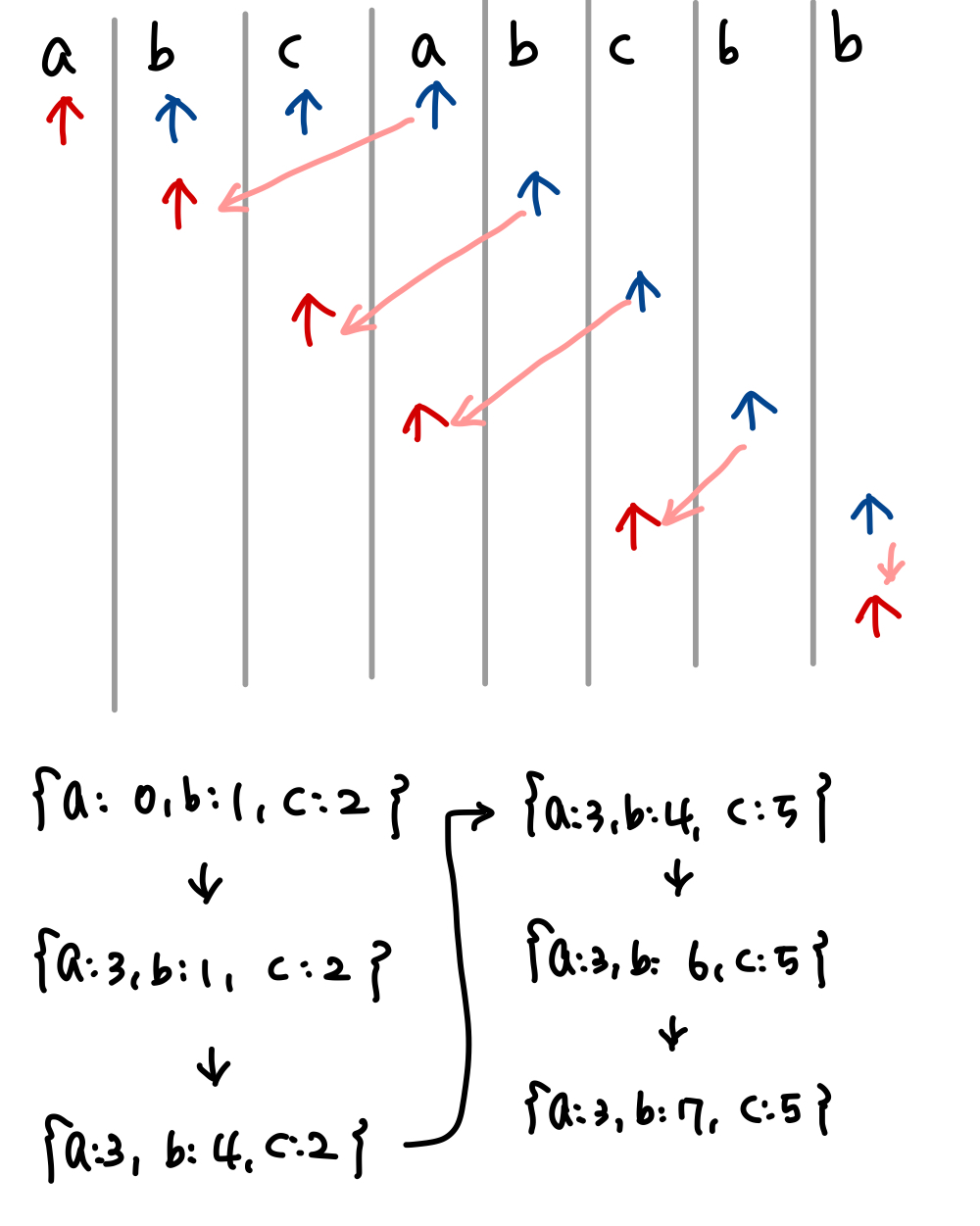문제
https://leetcode.com/problems/longest-substring-without-repeating-characters/description/
Longest Substring Without Repeating Characters - LeetCode
Can you solve this real interview question? Longest Substring Without Repeating Characters - Given a string s, find the length of the longest substring without repeating characters. Example 1: Input: s = "abcabcbb" Output: 3 Explanation: The answer is "
leetcode.com
Given a string s, find the length of the longest substring without repeating characters.
Example1
Input: s = "abcabcbb"
Output: 3
Explanation: The answer is "abc", with the length of 3.
Example2
Input: s = "bbbbb"
Output: 1
Explanation: The answer is "b", with the length of 1.
Example3
Input: s = "pwwkew"
Output: 3
Explanation: The answer is "wke", with the length of 3. Notice that the answer must be a substring, "pwke" is a subsequence and not a substring.
설명
주어진 문자 내에서 반복되지 않는 substring 문자의 최대 길이를 구하면 된다.
푼 방식( Two Pointer )
1. 처음 인덱스와 그다음 인덱스 설정 (i=0, j=1)
2. j 를 한 칸씩 이동하면서 저장된 문자와 같은 문자가 있을 경우 그전까지의 길이와 이전 max_len 비교
3-1. 만약 이전 max_len 보다 크다면 max_len 갱신 후 포인터 이동
3-2. 이전 max_len 보다 작을 경우 포인터만 이동
-> 포인터를 이동할 때 i는 기존에 있던 칸에서 한칸 오른쪽으로 이동, j의 경우 i 다음칸으로 이동
그림으로 보면 이러하다.

코드
from collections import defaultdict
class Solution:
def lengthOfLongestSubstring(self, s: str) -> int:
sub = defaultdict(int)
i, j = 0, 1
max_len = 0
if not len(s):
return 0
sub[s[0]] = 1
while j < len(s):
if not sub[s[j]]:
sub[s[j]] = 1
else:
if len(''.join(list(sub.keys()))) > max_len:
max_len = len(''.join(list(sub.keys())))
i += 1
j = i
sub = defaultdict(int)
sub[s[i]] = 1
j += 1
return max(max_len, len(''.join(list(sub.keys()))))
결과

답은 맞았지만 결과가 좀 처참했다. 다른 방법으로 풀어보자
다른 풀이
1. 오른쪽 포인터가 한 칸씩 이동
2-1. 먄약 이미 dictionary에 값이 있고, 왼쪽 포인터가 오른쪽 포인터 키 값보다 작다면 왼쪽 포인터를 해당 키 값에서 한 칸 옮김
2-2. 값이 없다면 오른쪽 포인터와 왼쪽 포인터의 값을 뺀 다음 1을 더해서 max_len을 갱신함
3. 오른쪽 포인터의 값을 현재 인덱스로 업데이트
4. 문자열을 다 돈 후 max_len 을 return 함

코드
class Solution:
def lengthOfLongestSubstring(self, s: str) -> int:
ans = 0
dic = {}
left, right = 0, 0
for right, val in enumerate(s):
if val in dic and left <= dic[val]:
left = dic[val] + 1
else:
ans = max(ans, right- left + 1)
dic[val] = right
return ans
결과

이전 코드보다 훨씬 개선되었다. 첫 번째 내가 푼 방식은 오른쪽 포인터를 다시 왼쪽으로 옮겨와서 진행하는 구조여서 반복이 많이 됐었던 반면 이렇게 풀게 되면 오른쪽 포인터가 중복으로 체크하는 일이 사라지게 된다.
'알고리즘' 카테고리의 다른 글
| [LeetCode] 561. Array Partition | LIM (0) | 2023.05.27 |
|---|---|
| [LeetCode] 300. Longest Increasing Subsequence | LIM (0) | 2023.05.16 |
| [LeetCode] 167. Two Sum II - Input Array Is Sorted | LIM (0) | 2023.05.04 |
| [LeetCode] 350. Intersection of Two Arrays II | LIM (0) | 2023.05.03 |
| [LeetCode] 441.Arranging Coins | LIM (0) | 2023.05.02 |




댓글